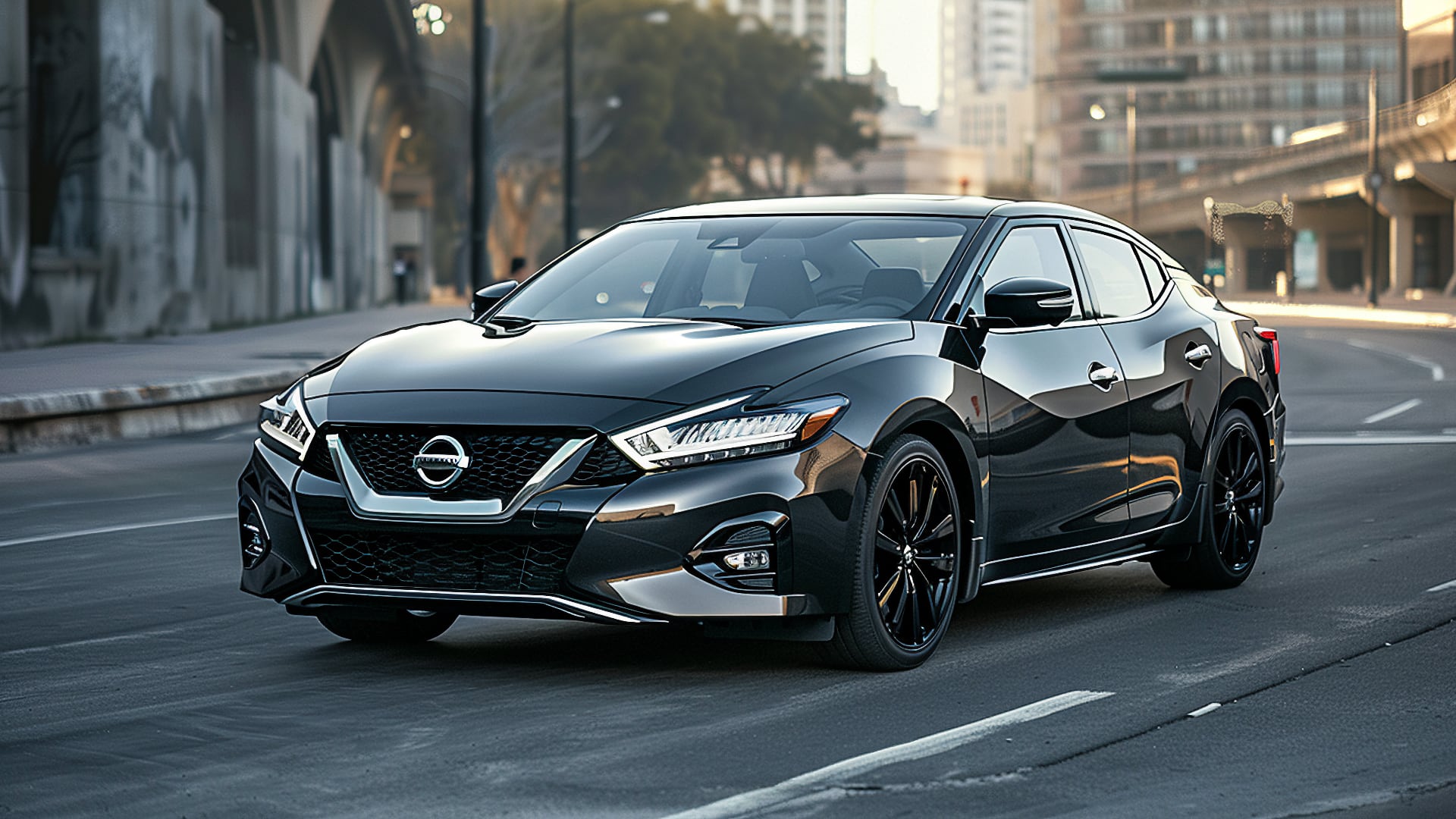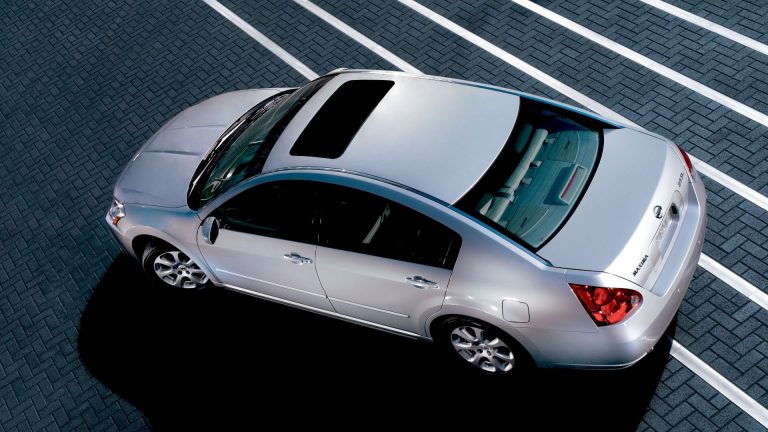Best and worst Nissan Maxima years — which to avoid
Our comprehensive review of best and worst Nissan Maxima years is grounded in meticulous analysis of real owner feedback and documented issues. This guide highlights models celebrated for their enduring quality and those notorious for frequent problems.

Although the Nissan Maxima is a reliable car, it is not flawless. Depending on the model year, you can experience several issues, so buying a model that would serve you for years requires some knowledge of Nissan Maxima years to avoid.
That’s why our team of automotive experts will lead you through the purchase options as we evaluate the best years to buy and worst Nissan Maxima years to avoid. Our research will help you identify the main problems that may occur with this car, as well as exact model years of struggling with those issues based on proven facts like NHTSA reports, driver complaints, and safety ratings.
Why you can trust REREV’s advice on which car model years to avoid: Our car experts look at official data, ask real drivers what they think, and talk to experienced mechanics to make sure our list is useful. This reliable info can make buying a car easier for you. Want to know how we do it? Find out more about our research methodology.
How we rated the best and worst Nissan Maxima years
First things first, we’ll take a tour through the best and worst Maxima years and explain how we rated them in that specific order. Of course, we only used double-checked and verified information about the model and its problems, starting with NHTSA records and safety ratings listed on the Insurance Institute for Highway Safety website.
Since we also wanted you to get a sense of first-hand ownership experience, we also included some details from reputable platforms that reviewed the car, as well as some Nissan Maxima forums. Since the model has been produced since the 1980s and models up to the 2000s didn’t have many reported issues, we’ll start with the model year 2000 of the fight generation.
| Nissan Maxima Generation | Best Nissan Maxima Years | Worst Nissan Maxima Years |
|---|---|---|
| 5th generation | 2003 | 2000, 2001 |
| 6th generation | 2007, 2008 | 2004, 2005, 2006 |
| 7th generation | 2011, 2012, 2013, 2015 | 2009, 2010 |
| 8th generation | 2017, 2018, 2019, 2020 | N/A |
Most common Nissan Maxima problems
Although the Nissan Maxima is an excellent car with many great features, there are some concerns raised with specific model years. The problems related to the worst Maxima years include transmission, steering, and fuel delivery issues, so let’s take a closer look.
1. Transmission malfunction and failure
Faulty transmissions are a common issue among many Nissan Maxima owners. Many owners report that their vehicles jerk while shifting, and others report stalling, slow acceleration, and rough gear transition until their transmissions fail. Some drivers add that the case becomes worse to the extent that where they no longer drive for fear of collisions.
These transmission issues are common with the 2004–2006 Maxima and happen at around 90,000–100,000 miles. Several owners have reached out to Nissan but were advised to make a total transmission replacement as that would resolve the issue. However, this replacement comes at a high cost of about $2,500 to over $3,000.
2. Leaking and low-pressure AC hose
If your Nissan Maxima’s air conditioner blows out warm air, it is possibly due to refrigerant leakage from the AC hose, which also causes low pressure in the system.
This is another prevalent issue with the Nissan Maxima, and owners of the 2001-2012 year models have complained about this issue, noting that it usually happens at around 87,000 miles.
3. Electronic steering column lock (ESCL) failure
The 2009 and 2010 Maxima models are known for their electronic steering column lock (ESCL) issues, which prevent the car from starting. The ESCL is designed to prevent theft, as the key fob needs to be in range with the vehicle for the ESCL to detect, which then releases the steering wheel, allowing it to rotate.
However, for the 2009 and 2010 Maximas, owners complained that the ESCL wouldn’t release the steering wheel, thus preventing them from starting their vehicles. Getting an ESCL replacement can be expensive, costing up to $1,000.
In this regard, Nissan rolled out a service campaign, offering a free ESCL replacement and reimbursing any repairs as long as the owners showed their proof of work.
4. Illuminated check engine light due to oil leak
Another prevalent problem, notably with the 2002-2014 Maxima, is oil leaking into the electrical connector of the camshaft position sensor, and this may cause the check engine light to turn on. Some owners report that their engines would stall periodically because of the oil leak.
Most Maxima owners report experiencing this issue at around 110,000 miles and add that it costs around $80-$120 to fit, but this may vary depending on costs for parts and labor.
5. Engine issues
Older Maxima models between 1995 and 2009 are known to have ignition coil failure, which also activates the check engine light. Some owners report that the defective coil produces sparks that send feedback through the wire harness, causing damage to other coils.
This often happens around 130,000 miles, but some drivers report having this issue at about 50,000 miles. Replacing the ignition coil can cost around $500 to over $700, depending on the parts and labor costs.
On top of that, several Maxima models were plagued with early timing chain failure. Some drivers report that the Nissan timing chain was too sharp, thus sawing through its guide quickly, while others complain that the chain might be too weak and susceptible to stretch.
6. Faulty Takata airbags
Like many other Nissan models, the Maxima struggled with the dreadful Takata airbags, specifically the 5th generation Maxima. The airbag inflators can explode, shooting metal fragments after deployment, which accounted for 27 deaths worldwide.
Nissan arranged a recall in 2020 to fix faulty airbags and replace them with new ones in affected vehicles starting with the 2001 Maxima.
Worst Nissan Maxima years to avoid

There is only one Nissan Maxima generation you should avoid, and this is the sixth generation. This is due to the numerous issues associated with the year models of this generation. While the fifth-gen Maxima had problems in 2000 and 2001 years, like the seventh-gen did in 2009 and 2010, these were mostly minor issues reported in low numbers.
However, the sixth-gen model suffered more, often causing headaches for drivers who owned one of the following years:
- 2004
- 2005
- 2006
We’ll also explain why these faced more issues than the other model years on our list.
Sixth-generation Maxima (2004-2006 model years)
The issues with the sixth generation of the Maxima were traced to transmission slips and jerks after about 100,000 miles. The repair costs were between $2,500 to $3,500, and many owners didn’t bother fixing the issues.
Nissan had a class-action lawsuit filed against them for the entire sixth Maxima generation – that’s just how problematic these model years seem to be.
As if the transmission issues weren’t enough, the generation was also plagued with issues with the camshaft position sensors, the power steering pump, the crankshaft position sensor, the AC lines, and a few other problems. It’s best to avoid it altogether up until the 2008 model just to be safe. Some of the worst engine-related issues that this generation faced include rattling noise on startup and shaking or vibration coming from the engine bay.
What are the best Nissan Maxima years to buy?
So, now we get to the big question – what are the best Nissan Maxima years? The best Nissan Maxima years are 2012 and 2015, but here’s a full list:
- 2003
- 2007
- 2008
- 2011
- 2012
- 2013
- 2015
- 2017
- 2018
- 2019
- 2020
We’ll also discuss the two best model years in more detail to help you figure out if they make a perfect choice for you.
2012 Nissan Maxima
The only drawback of this model year is their requirement for premium fuel. Although the 2012 Maxima offers good fuel economy, its premium fuel requirement somewhat contradicts that.
Other than that, the 2012 model is pretty solid with just a few issues ever being reported to NHTSA. These issues include interior accessory faults and electric problems, but at least there were no engine-related issues or any other severe problems with it. With great feedback from previous owners and a rating of 4.6 out of 5 stars on Edmunds, it’s a perfect pick.
2015 Nissan Maxima
For the 2015 Maxima model, drivers still haven’t reported any major issues which makes this model rather unique in the used car market. It’s not as if it’s a recent model since almost 10 years have passed since its production line assembly, yet it manages to maintain dependability splendidly with zero issues reported.
Is the Nissan Maxima worth buying?
The Nissan Maxima is a good car with a powerful engine that provides quick acceleration, excellent handling, and an array of driver-assistance features. It also has a good cabin clearance with a user-friendly infotainment system.
Ready to get a closer look at some standout vehicles? Our in-depth insights on Lexus ES 350 years to avoid, Acura TL years to avoid, and Toyota Avalon years to avoid could be the key to unlocking your perfect car choice.
What year was the best year for the Nissan Maxima?
The 2017 model year was the best model year for the Nissan Maxima.
How many miles do Nissan Maximas last?
The Nissan Maxima is a remarkable sedan built to last an average lifespan of about 150,000 to 200,000 miles.
Are Nissan Maximas good cars?
Nissan Maximas are good cars providing remarkable features along with great driving experiences.